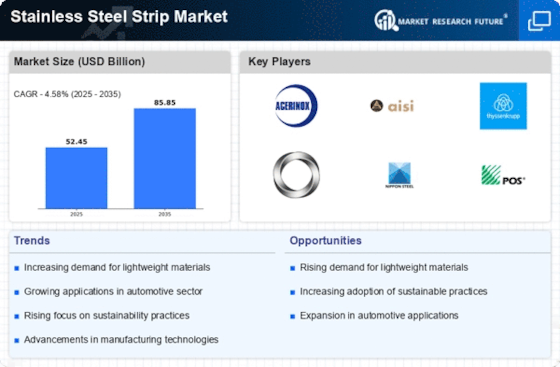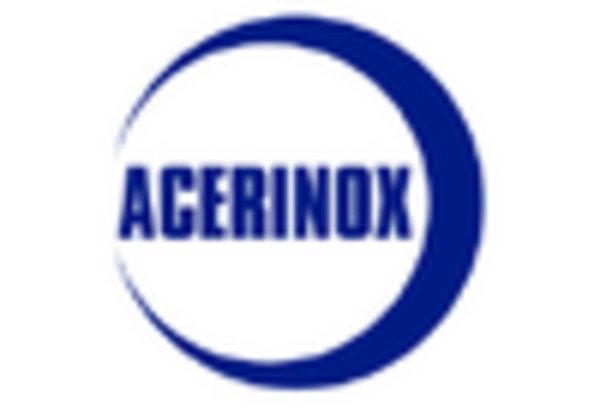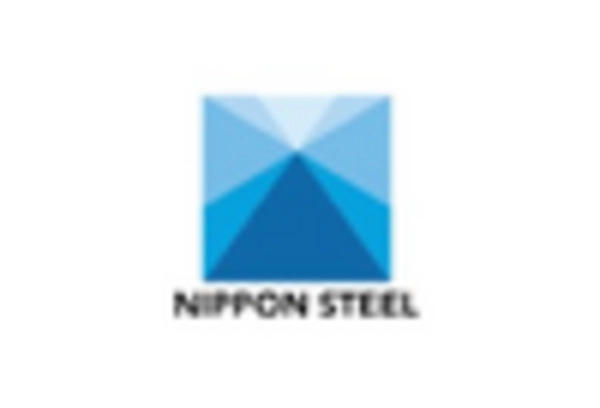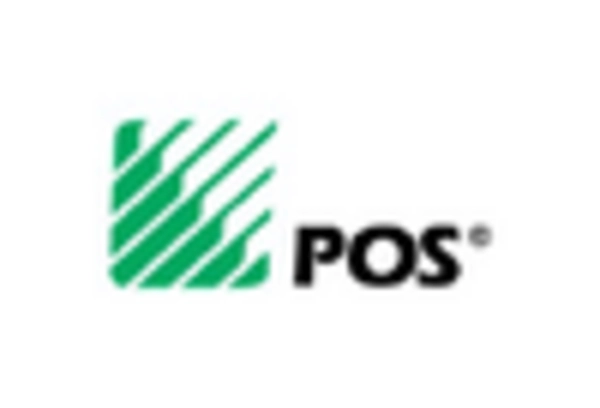Growing Demand for Consumer Goods
The stainless steel strip market is witnessing a surge in demand for consumer goods, particularly in kitchenware and appliances. Stainless steel strips are increasingly utilized in the production of high-quality cookware, cutlery, and home appliances due to their durability and aesthetic appeal. As consumer preferences shift towards premium products, manufacturers are likely to invest in stainless steel strips to enhance their product lines. In 2025, this trend is expected to drive significant growth in the market, as the demand for stylish and long-lasting consumer goods continues to rise, indicating a positive outlook for the stainless steel strip market.
Rising Demand in Automotive Sector
The automotive sector is experiencing a notable increase in demand for stainless steel strips, primarily due to the industry's shift towards lightweight and durable materials. Stainless steel strips are favored for their corrosion resistance and aesthetic appeal, making them ideal for various automotive applications, including body panels and structural components. In 2025, the automotive industry is projected to account for a significant share of the stainless steel strip market, driven by the growing production of electric vehicles and the need for enhanced safety features. This trend suggests that the stainless steel strip market will likely see robust growth as manufacturers seek to meet the evolving demands of consumers and regulatory standards.
Infrastructure Development Projects
Infrastructure development projects are a critical driver for the stainless steel strip market, as governments and private entities invest heavily in construction and renovation. The demand for stainless steel strips in construction applications, such as roofing, cladding, and structural supports, is expected to rise significantly. In 2025, the construction sector is anticipated to contribute substantially to the overall market growth, with stainless steel strips being preferred for their strength and longevity. This trend indicates that the stainless steel strip market will benefit from ongoing urbanization and the need for sustainable building materials, potentially leading to increased production capacities and innovation in manufacturing processes.
Technological Innovations in Manufacturing
Technological innovations in manufacturing processes are transforming the stainless steel strip market, enhancing production efficiency and product quality. Advanced techniques such as precision rolling and laser cutting are enabling manufacturers to produce thinner and more precise stainless steel strips, catering to diverse applications across various sectors. In 2025, the adoption of automation and smart manufacturing technologies is likely to streamline operations, reduce waste, and lower production costs. This evolution suggests that the stainless steel strip market will not only expand in terms of volume but also improve in terms of product offerings, meeting the specific needs of end-users more effectively.
Environmental Regulations and Sustainability
Environmental regulations and sustainability initiatives are becoming pivotal in shaping the stainless steel strip market. As industries face increasing pressure to adopt eco-friendly practices, the demand for recyclable and sustainable materials is on the rise. Stainless steel strips, known for their recyclability and low environmental impact, are gaining traction across various sectors. In 2025, stricter regulations regarding waste management and emissions are likely to propel the adoption of stainless steel strips, as companies seek to comply with environmental standards. This shift suggests that the stainless steel strip market will not only grow but also evolve towards more sustainable practices, aligning with global efforts to reduce carbon footprints.

















Leave a Comment